Some of the most beautiful work of this craftsman, and many others, are in this book “Liège Gunmakers through their Work. 1800 - 1950”.
For more detail see: LIEGE GUNMAKERS
Ory Ch. & Duquenne J.
Shotgun
to central percussion and top break. The two unrifled bores are juxtaposed. The
locks called “ahead” are nicely engraved scenes of hunting. The system is known
as “hammerless” because the hammers are invisible. The break (opening) is
practiced using key “top lever” placed at the top as of locks. The stick of
walnut is worked “with English”.
The
weapon carries the lawful punches of the proofhouse of Liege, namely:
ELG* in a
crowned oval:
acceptance, of use of 1893 to 1968.
D*:
countermark of the controller, of use of 1877 to 1968.
Peron:
inspection, of use of 1853 to our days.
EL in
English letters:
provisional test, of use of 1852 to our days.
PV
surmounted of a stylized lion: test with the smoke-free powder, of use of 1898 to 1968.
1Kg443:
weight of the barrel which can draw from the smoke-free powders (smooth weapons)
except for the gram. In use of 1924 to our days.
12-70 in
an omega:
gauge nominal and length of casing. In use of 1924 to our days.
CHOKE
18.3:
chokes barrels, gauged to 22 cm of the breech. In use of 1924 to 1968.
Small “f”:
yearly letter of 1927.
The
weapon also carries the following marks:
ORY &
DUQUENNE IN LIEGE: Ory Charles and Duquenne J. were manufacturers arms manufacturers
street Saint Laurent, 92 in Liege. They were registered with the bench of tests
of 1904 to 1934.
LB in a
cartouche:
mark of the manufacturer of barrels of rifles of Liège Lambert & Bruyninckx.
STEEL
SIEMENS MARTIN:
steel used for the barrels.
8736:
classification of the weapon.
ND on the
barrels:
probably a subcontractor (équipeurs or others?)
GG
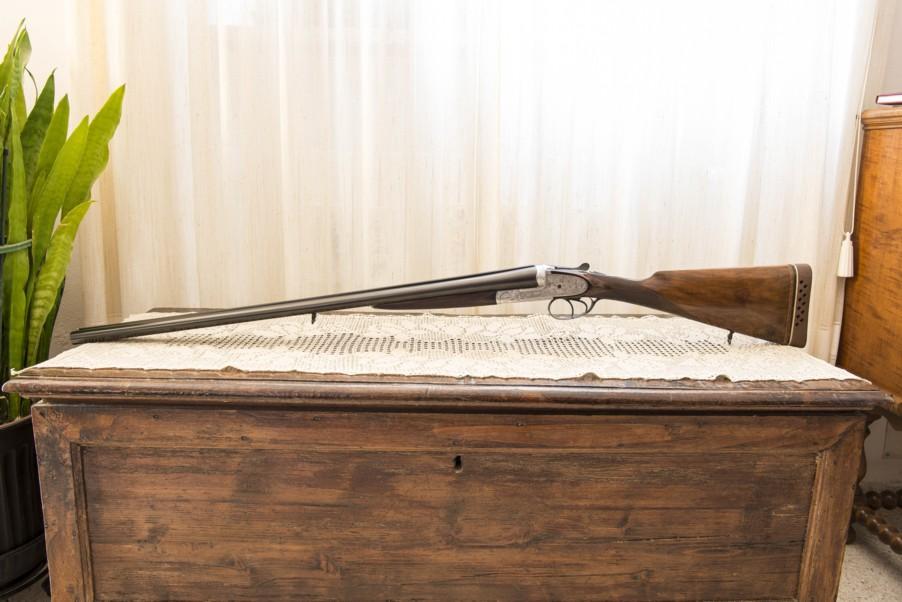
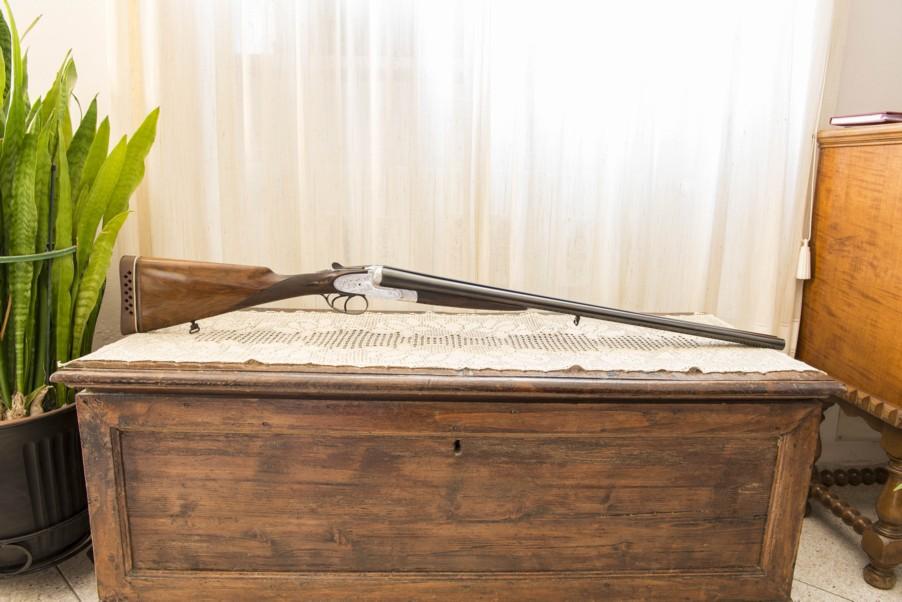
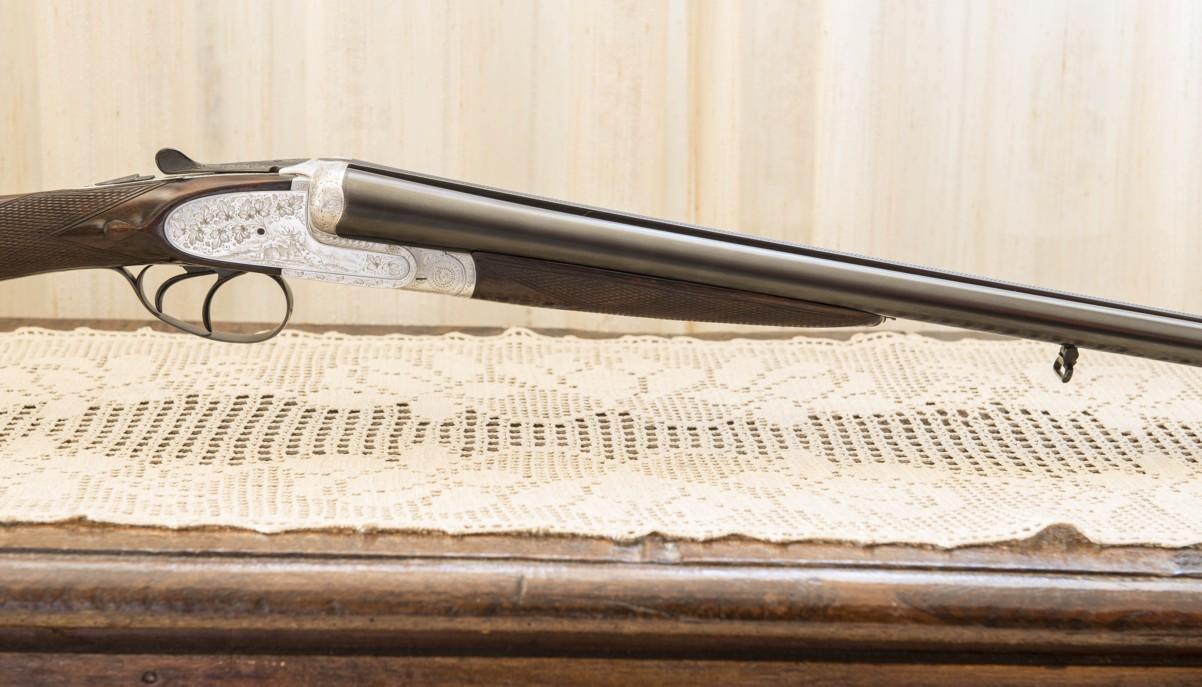
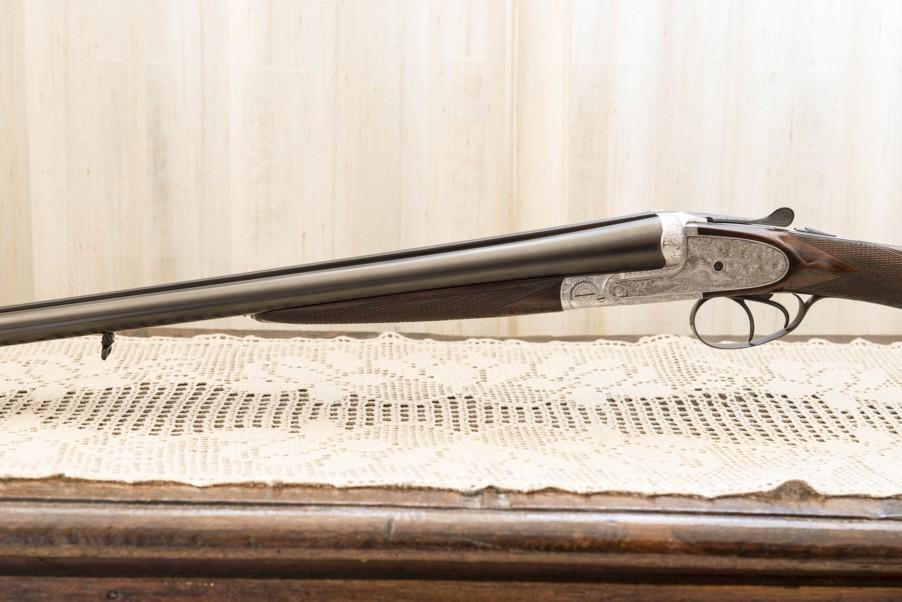
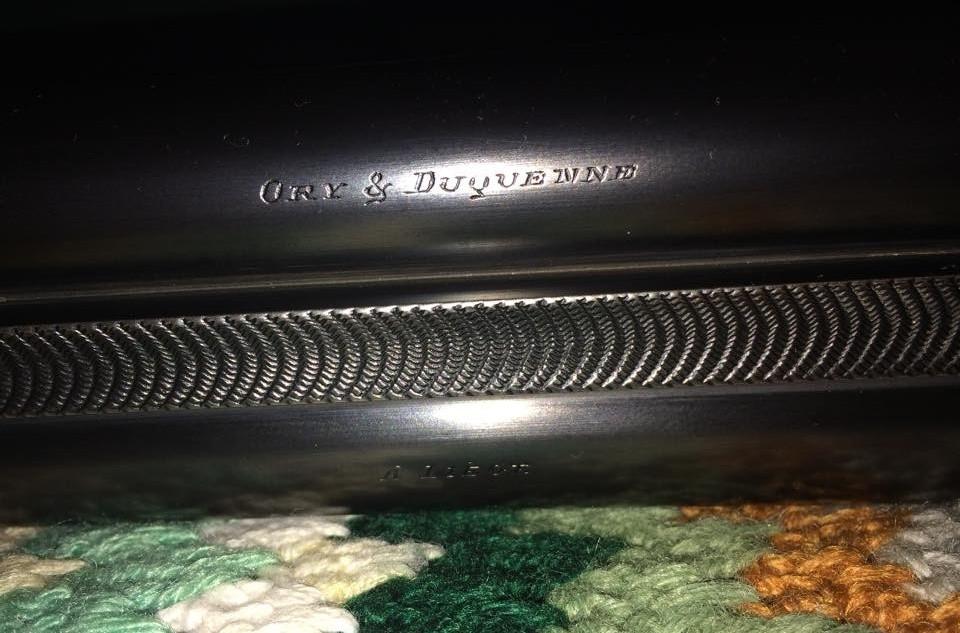
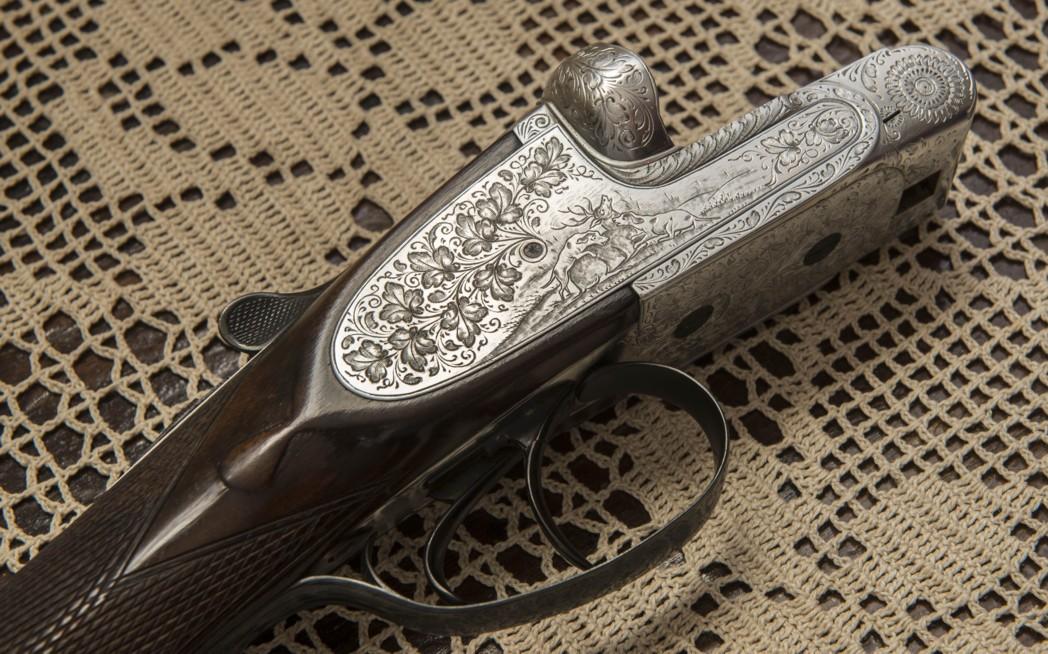
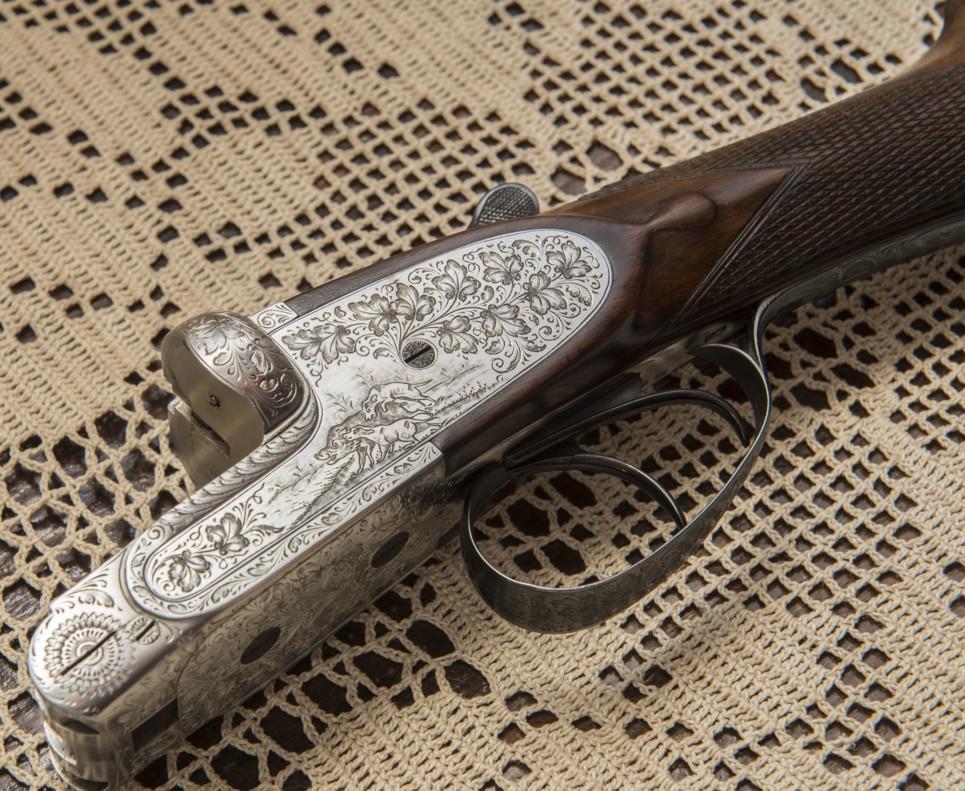
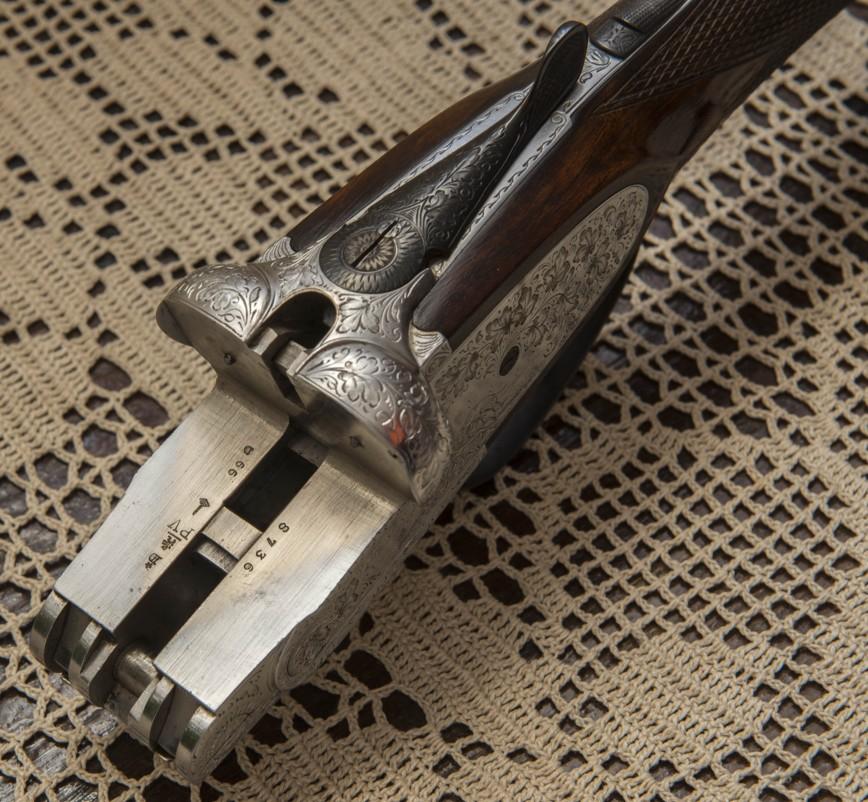
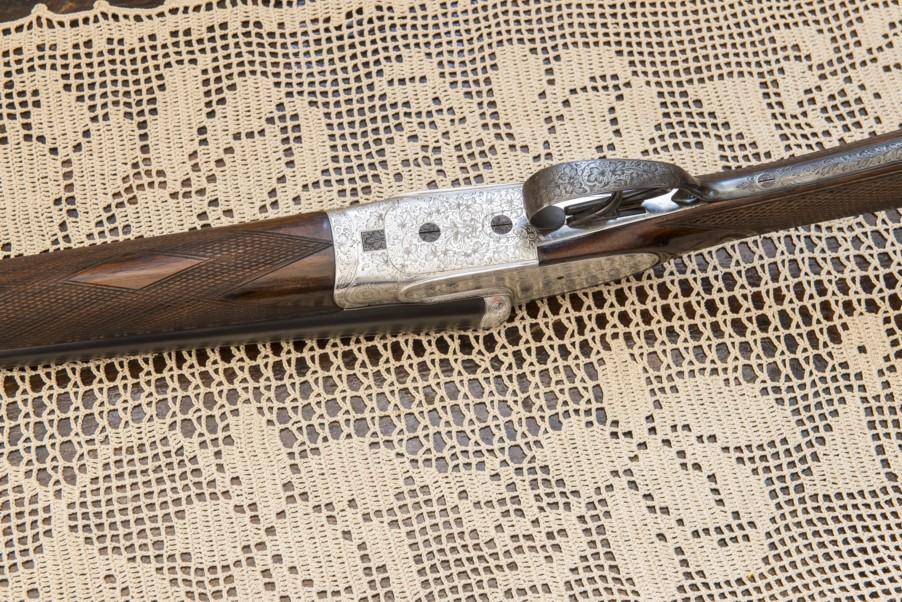
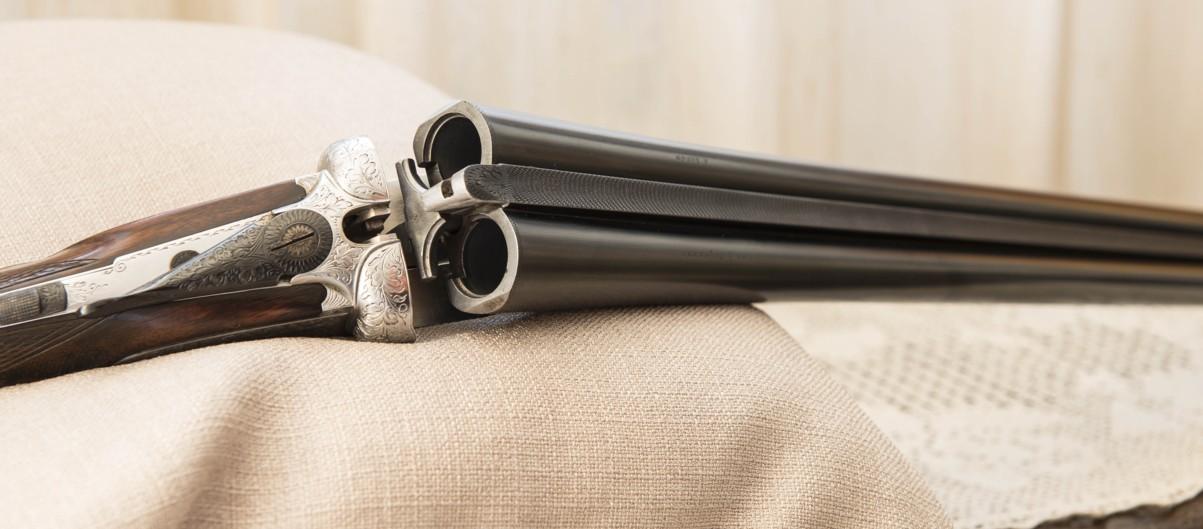
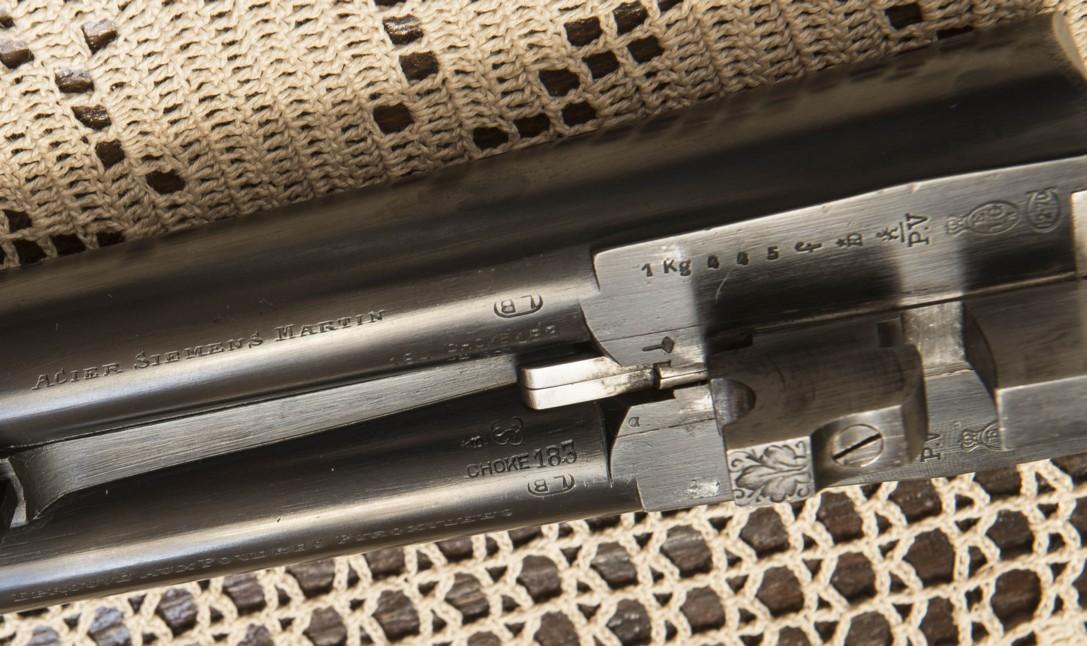
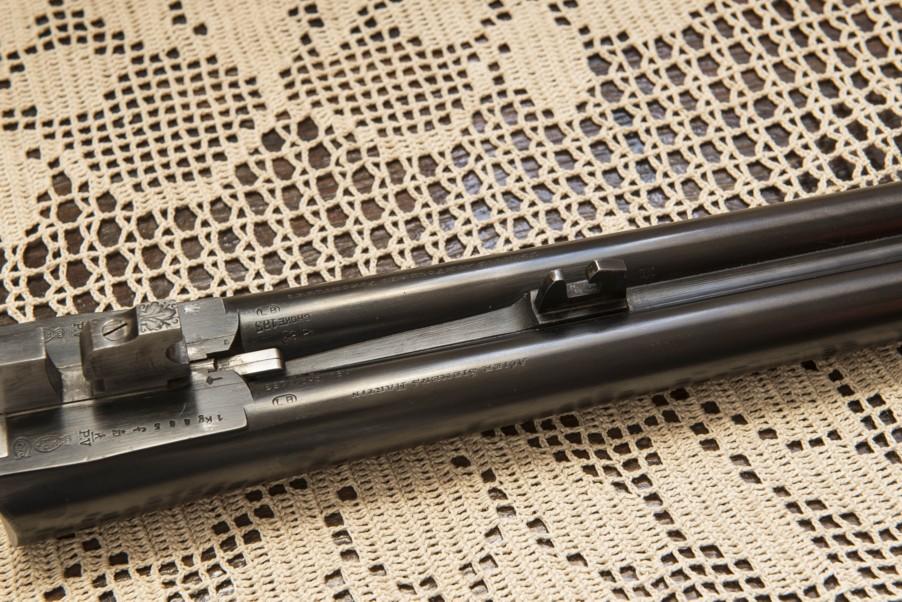
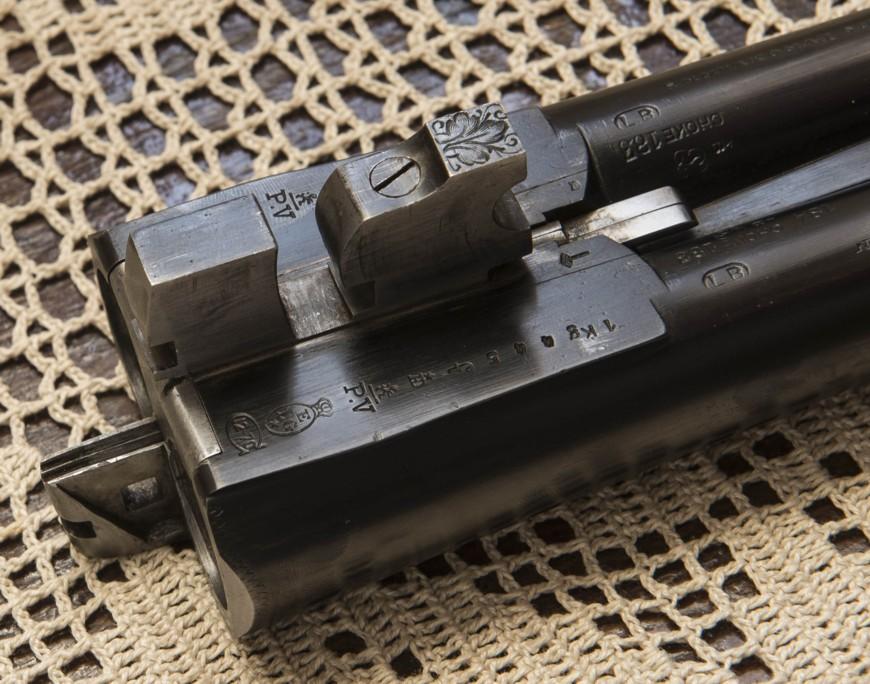
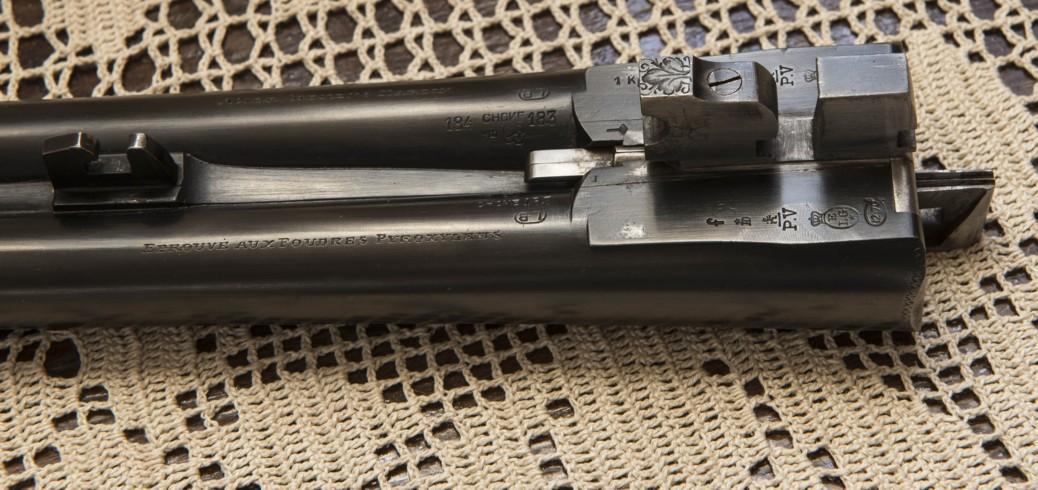
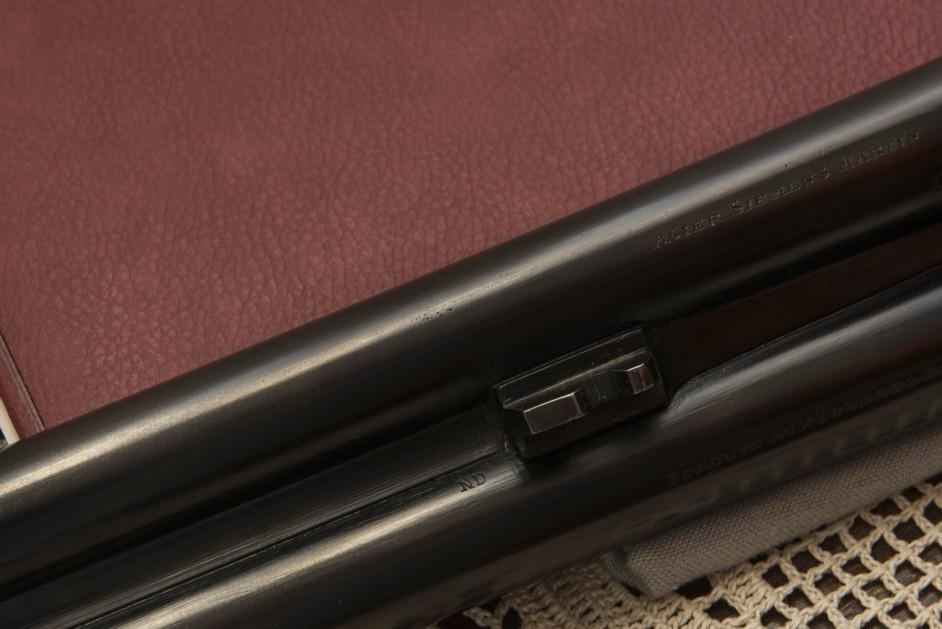
Ory Ch. & Duquenne J.
The weapon
Revolver with central percussion of type CONSTABULARY freely inspired by Royal Irish Constabulary. It has double and simple action.
The rifled bore is with 8 sides with a front sight in half-moon.
Does the grooved barrel is with 5 rooms, seem of gauge 8mm?
The loading is practiced by a side door opening thanks to the action of an internal spring. The rod swivels on an axis and is used for the extraction of the casings.
The grips consists of two plates out of wooden (of walnut?). They squared and are maintained sets by a screw and two rivet washers out of brass.
This stick ends in a ring of cap assembled on screw-pivot.
Punches
They are the lawful punches of the proofhouse of Liege, namely:
ELG spangled in an oval crowned: acceptance post 1893.
V spangled: countermark of the controller post 1877.
R crowned: rifled bore, of use of 1894 to 1968.
Markings
L crowned: this letter and the letter C crowned is often met on the revolvers of Liège and this only on the cylinders! These marks resist the identification for a long time and certain researchers think that it is perhaps about a mark of foundry, the barrels being out of crucible cast steel!
ALM OB GF: unknown marks but probably belonging to subcontractors. Those were never indexed seriously so that they cannot be identified any more.
OD crowned: mark probably belonging to ORY CH. & DUQUENNE J. arms manufacturers in Liege street SAINT LAURENT, 92. They were registered with the proofhouse of 1904 to 1935 before being taken again by DUQUENNE & KRAMER.
GG
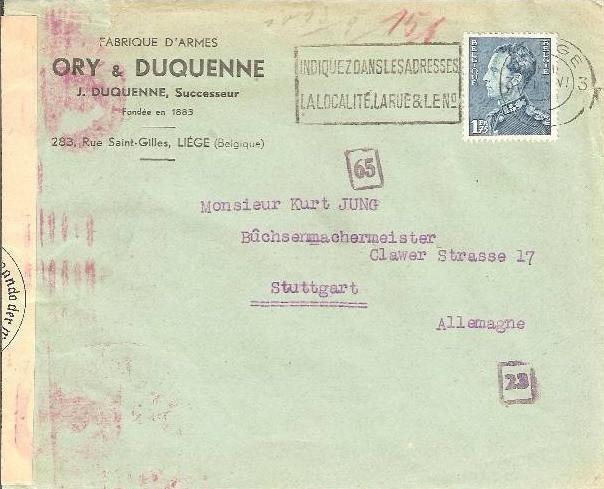
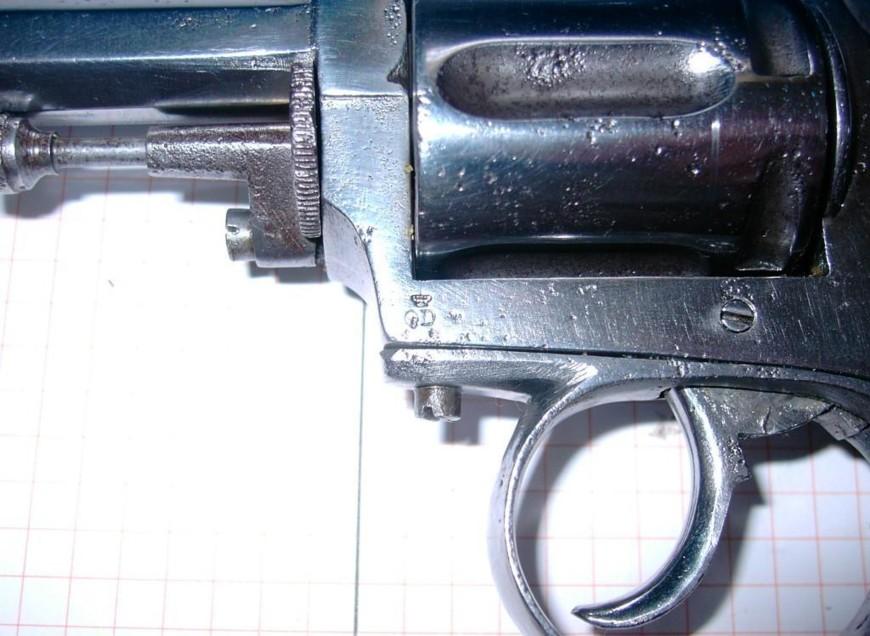
Ory & Duquenne
Me too I’m collector but winches of fishing made in Belgium.
In the area of Liege there were many workshops which manufactured winches, and not badly of them were manufacturers of firearms, for example I have some winches with the mention ARMAF-Liege (photograph joint also like example).
But now I found a winch with the mention L.B. Made in Belgium, I did not find anything with what relates to the name, addresses, and so on.
On your Website I found Lambert & Bruyninck which used LB in an oval lying!
Look at the photograph joined; it is perhaps the same one, that thinks?
I am also always in the search of a manufacturer in the name of L. ORY (photo herewith also like example), I have tens of the winches of this firm but I did not find anything of the whole with regard to the address, period, etc
M.v.g.,
Jean-Paul
Your request is particular although it is exact that the arms manufacturers of Liège diversified when the orders of weapons were not enough any more to make them live.
Thus much of them had one second activity: the toys, the bicycles, the motor bikes and even cars (PIEPER, NAGANT, FN). Others held a trade of food, tobacco and even a bar.
This is why the manufacture of mills of fishing does not astonish me.
However this additional activity hardly appears in documentation!
In answer to your questions, I traversed my catalogues arms manufacturers but fishing is quite thin.
Could LB in an oval be LHERMITE & BRUYNINCK but the mark differs from yours by the thick bar under the L. I’m unaware of if this firm manufactured mills?
For L. ORY I found only firm ORY & DUQUENNE street St Gilles 283 in Liege.
I am unaware of also if they manufactured mills.
In appendix some markings of these firms by hoping that that interests you.
GG
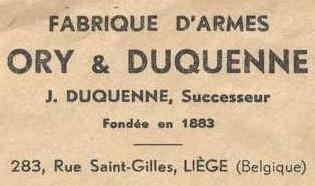
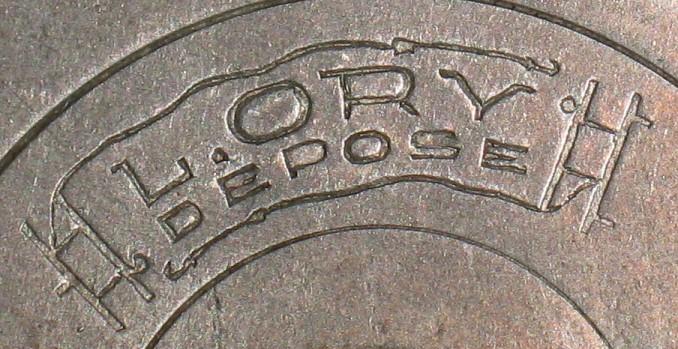
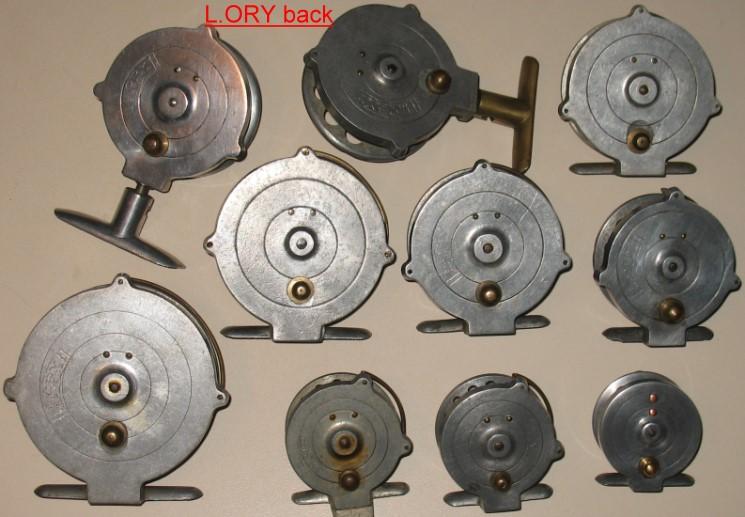
Back to "IDENTIFIED CRAFTSMEN"